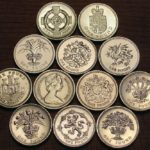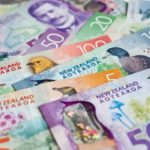The yen declined against the US dollar as investors awaited the outcome of FOMC’s two-day meeting, where policy makers are expected to further scale back Fed’s monthly bond purchases.
USD/JPY hit a session high at 103.25 at 10:15 GMT, after which consolidation followed at 102.91, adding 0.35% for the day. On January 24th, USD/JPY touched 102.00, the pair’s weakest since December 6th. Support was likely to be received at January 27th low, 102.06, while resistance was to be met at January 24th high, 103.59.
Greenbacks demand was pressured following an unexpected slump in US durable goods orders in December.
The US Commerce Department reported today that durable goods orders plunged 4.3% in December, confounding analysts expectations for a 1.8% increase. Bookings for durable goods or those meant to last at least three years were downward revised in November to a 2.6% advance from a previously estimated 3.4% gain.
Core durable goods orders or those excluding the volatile transportation items, declined 1.6% in December, the largest slump since March, defying analysts forecasts for a 0.5% advance. Orders for core capital goods, excluding defense, fell 3.7%% last month, confounding projections for a 1% gain and after a downward revised increase of 2.7% in November.
However, data showed that the consumer confidence rose for a second month, reaching 80.7 in January, the highest since August, exceeding analysts forecasts of an increase to 78.0. In November the consumer confidence stood at 77.5.
The downbeat reports on the durable goods orders did little to alter the overall market expectations for stimulus cuts at the upcoming two-day FOMC’s meeting, which starts later today.
According to the median estimates by experts in a survey by Bloomberg conducted on January 10th, the Federal Open Market Committee (FOMC) will probably reduce the monthly pace of bond purchases from the current 75 billion USD by increments of 10 billion USD at every policy meeting to exit the program this year.
Meanwhile, the yen came under selling pressure yesterday after the Japanese Ministry of Finance reported today that the trade deficit of the nation widened to 11.5 trillion yen during the previous year, the highest on record. The Japanese trade deficit in 2013 was almost double the previous year’s amid devaluation in the currency and energy shipments, which increased the import bill.
The yen was also pressured by a widening gap in the interest rates between 10-year US Treasury bonds and comparable Japanese government bonds. The rate premium of US 10-year Treasury bonds over Japanese government debt widened to 209 basis points, above the five-year average of 163 basis points.
“The widening U.S.-Japan yield differentials will steer the yen to gradual weakness on top of yen selling amid trade deficits”, said Yunosuke Ikeda, the Tokyo-based head of foreign-exchange strategy at Nomura Securities Co., in a conference call today, cited by Bloomberg.
Bank of Japan has been purchasing more than 7 trillion JPY (68.4 billion USD) of government bonds each month in its struggle to achieve 2% inflation in two years since April 2013. There are growing concerns that BoJ will have to increase the scale of its asset-purchasing program this year, which puts heavy pressure on the yen.
Elsewhere, GBP/USD hit a session low at 1.6538 at 10:15 GMT, after which consolidation followed at 1.6567, losing 0.10% on a daily basis. Support was likely to be received at January 27th low, 1.6480, while resistance was to be encountered at January 24th high, 1.6668, also the pair’s highest since May 2nd 2011, when GBP/USD touched 1.6739.





